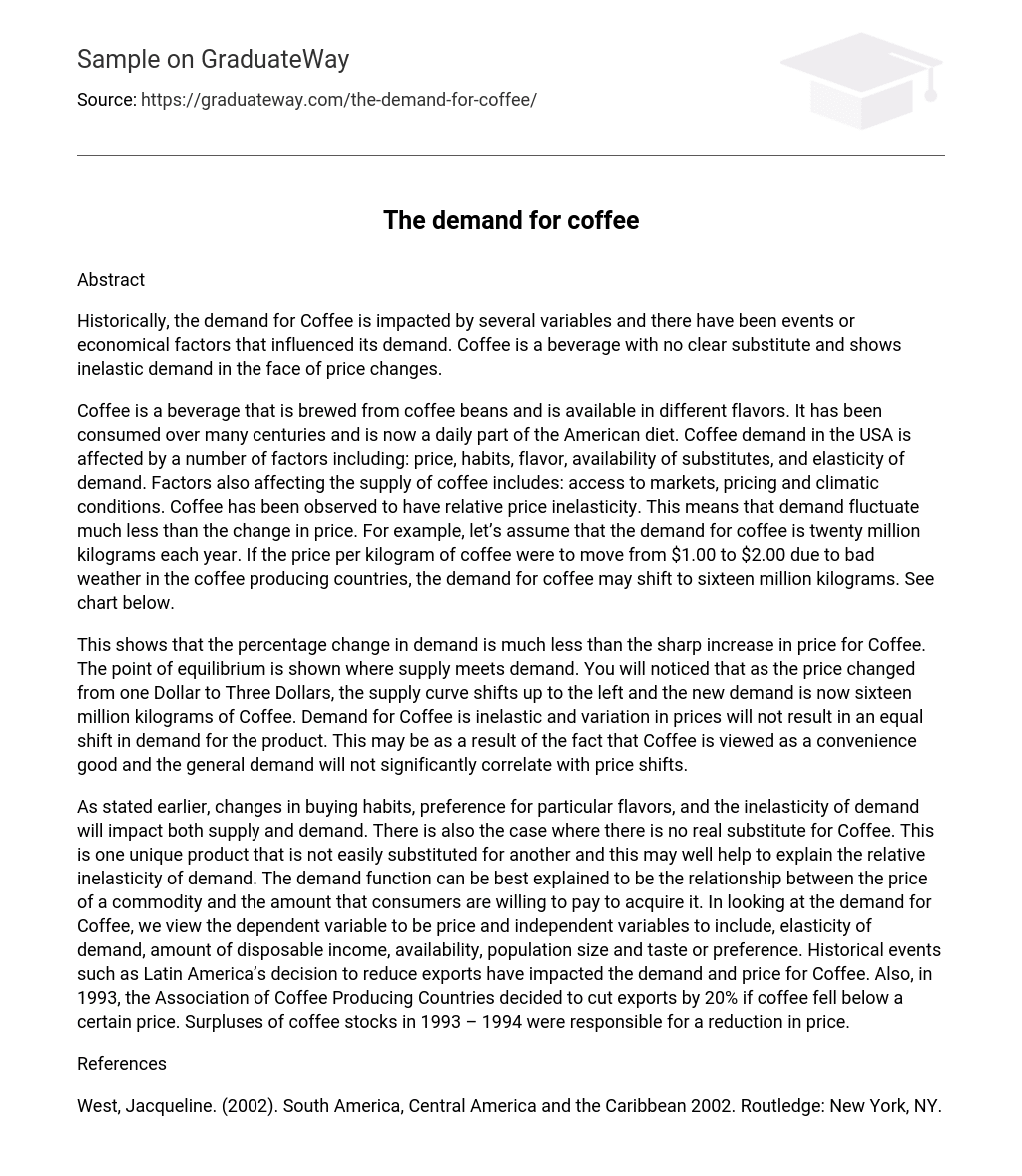Abstract
Historically, the demand for Coffee is impacted by several variables and there have been events or economical factors that influenced its demand. Coffee is a beverage with no clear substitute and shows inelastic demand in the face of price changes.
Coffee is a beverage that is brewed from coffee beans and is available in different flavors. It has been consumed over many centuries and is now a daily part of the American diet. Coffee demand in the USA is affected by a number of factors including: price, habits, flavor, availability of substitutes, and elasticity of demand. Factors also affecting the supply of coffee includes: access to markets, pricing and climatic conditions. Coffee has been observed to have relative price inelasticity. This means that demand fluctuate much less than the change in price. For example, let’s assume that the demand for coffee is twenty million kilograms each year. If the price per kilogram of coffee were to move from $1.00 to $2.00 due to bad weather in the coffee producing countries, the demand for coffee may shift to sixteen million kilograms. See chart below.
This shows that the percentage change in demand is much less than the sharp increase in price for Coffee. The point of equilibrium is shown where supply meets demand. You will noticed that as the price changed from one Dollar to Three Dollars, the supply curve shifts up to the left and the new demand is now sixteen million kilograms of Coffee. Demand for Coffee is inelastic and variation in prices will not result in an equal shift in demand for the product. This may be as a result of the fact that Coffee is viewed as a convenience good and the general demand will not significantly correlate with price shifts.
As stated earlier, changes in buying habits, preference for particular flavors, and the inelasticity of demand will impact both supply and demand. There is also the case where there is no real substitute for Coffee. This is one unique product that is not easily substituted for another and this may well help to explain the relative inelasticity of demand. The demand function can be best explained to be the relationship between the price of a commodity and the amount that consumers are willing to pay to acquire it. In looking at the demand for Coffee, we view the dependent variable to be price and independent variables to include, elasticity of demand, amount of disposable income, availability, population size and taste or preference. Historical events such as Latin America’s decision to reduce exports have impacted the demand and price for Coffee. Also, in 1993, the Association of Coffee Producing Countries decided to cut exports by 20% if coffee fell below a certain price. Surpluses of coffee stocks in 1993 – 1994 were responsible for a reduction in price.
References
West, Jacqueline. (2002). South America, Central America and the Caribbean 2002. Routledge: New York, NY.
Econoclass.com.(2008). Elasticity: A Primer. Retrieved March 11, 2009 from www.econoclass.com/elasticity.html





